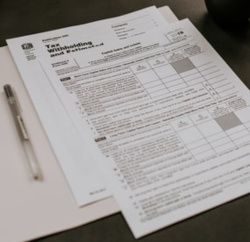Take These Easy Steps to Cut Your Tax Bill Next Year
Here are some easy steps to avoid paying hefty tax next year with the Internal Revenue Service (IRS).
Millions of Americans across the country face financial issues because of the economic fallout caused by the coronavirus pandemic.
In April next year, millions are expected to pay their tax with the IRS that could add to the financial burden of the unemployed individuals in the country.

After President Donald Trump signed and issued an executive order that expanded the unemployment benefits, millions of furloughed and laid-off individuals in different states filed for the said benefit. However, the fact remains that they still need to pay federal taxes next year.
While it is true that the unemployment benefits and the relief aids are the lifelines for many right now, this could still cause headaches for many in April next year as the IRS said that unemployment benefits are still considered taxable.
However, it does not necessarily mean that your tax is automatically taken out on your unemployment benefits like a regular paycheck. As a taxpayer, you are still responsible for accounting for your benefits, or else you will pay big tax next year.
Although unemployment benefits usually subject to the same tax requirements similar to other forms of compensation, the taxes you will pay vary from one state to the other. It is because each state has different amounts of state unemployment benefits or claims.
States like Alabama, California, Montana, New Jersey, Virginia, and Pennsylvania do not collect income tax on unemployment benefits. Same with Alaska, Florida, Nevada, New Hampshire, South Dakota, Tennessee, Texas, Washington, and Wyoming.
To avoid paying a big tax next year, you have to be mindful of the forms you fill out, aside from the unemployment benefits or claims form. Some states do not incorporate federal and state withholding during the sign-up period.
When you file your unemployment benefit, you might also be asked to fill out a form W-4V. It is a very important form that will allow you to request the IRS a flat 10 percent to be withheld from your unemployment benefit. But an expert claimed that a 10 percent tax rate might not be enough for everyone.
"It depends how much you worked during the year, what other income streams you might have. Some people get unemployment and have side gigs or their spouse is working. It really depends on your personal situation," said Michele Cagan, a CPA in Baltimore.
She advised that one way to estimate and check on track on how much tax a person is going to pay in a year is to visit the IRS website's withholding estimator.
According to a published article in Forbes, their estimator asks for information from recent pay statements and other sources of income, including the recent tax return of a person.
However, you can also choose to have quarterly payments if a 10 percent withholding tax on your unemployment check will not work for you.
You can pay your tax payments every three months rather than paying it in April. Fill out the form IRS Form 1040-ES to determine your estimated taxes.
Check these out!
Subscribe to Latin Post!
Sign up for our free newsletter for the Latest coverage!
© 2025 Latin Post. All rights reserved. Do not reproduce without permission.













